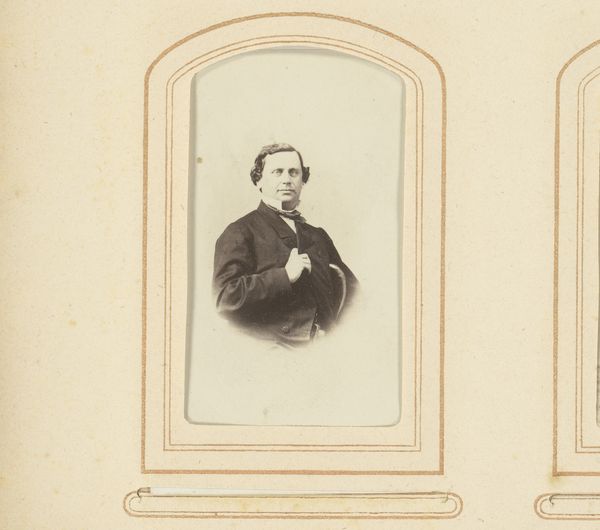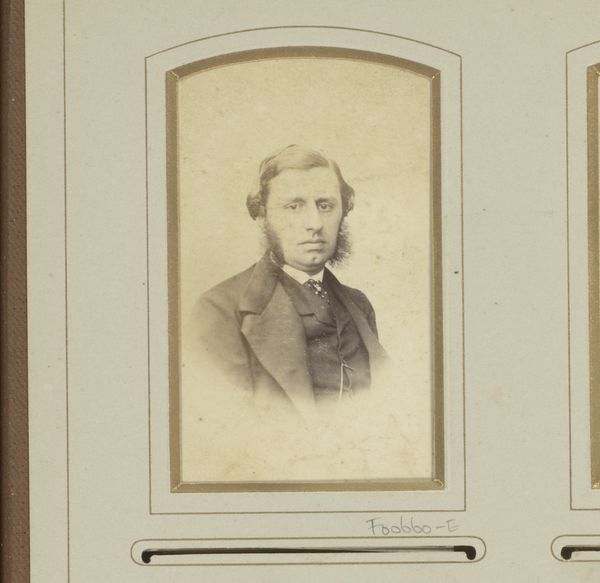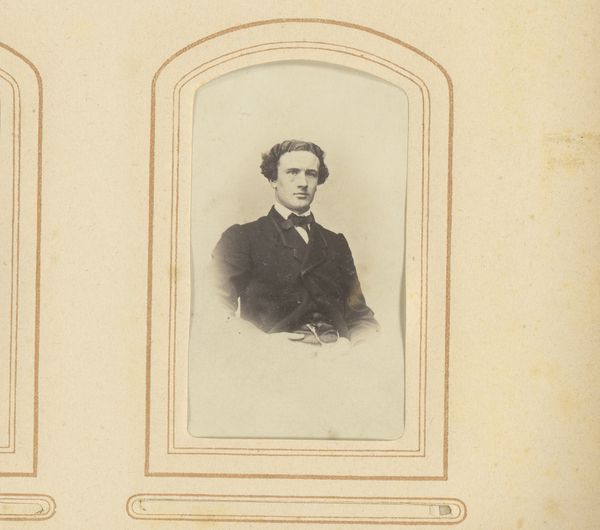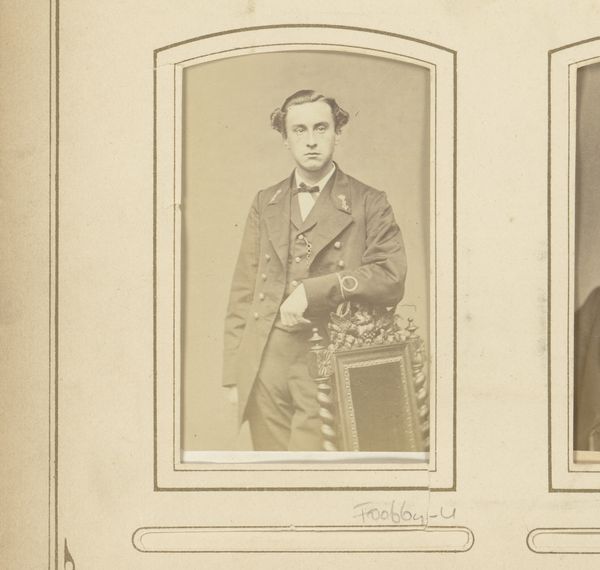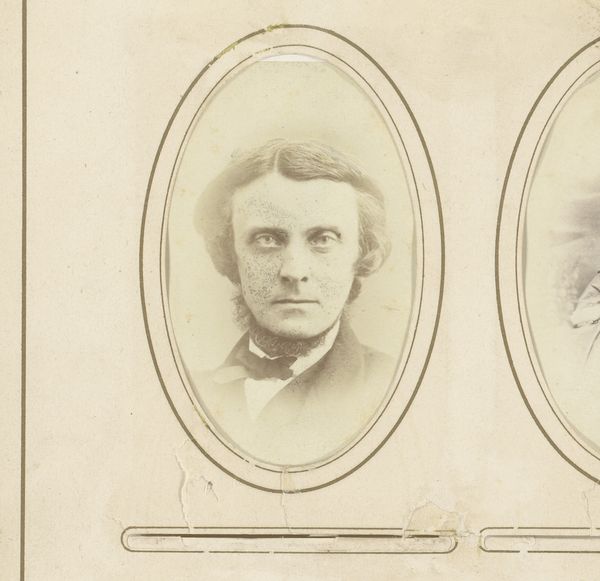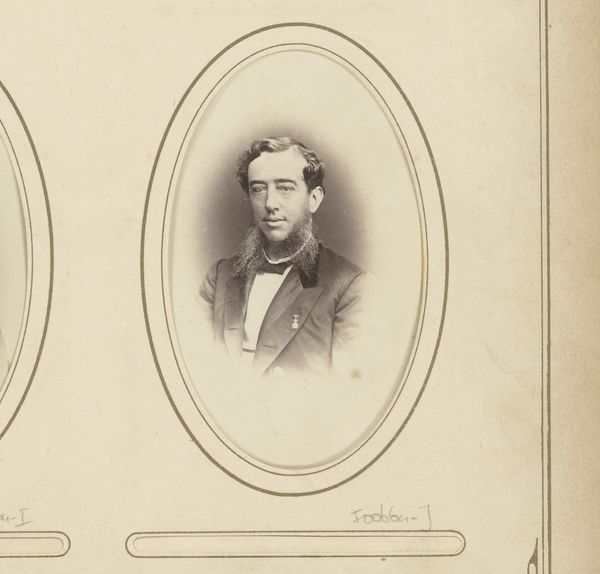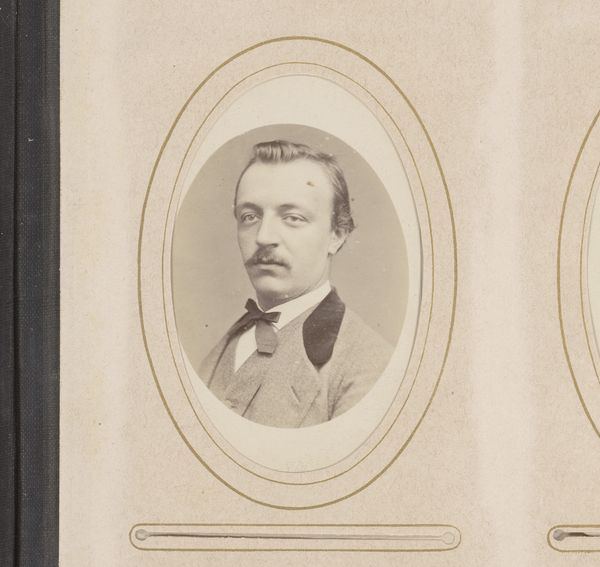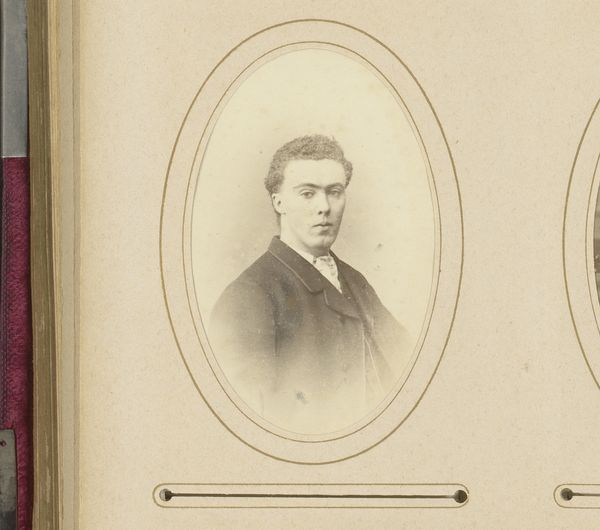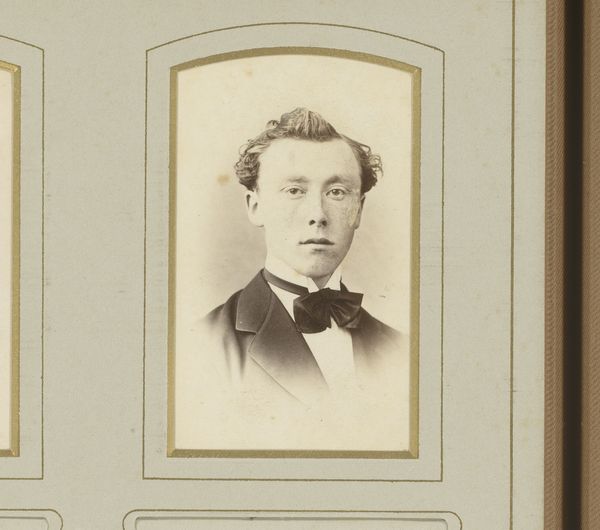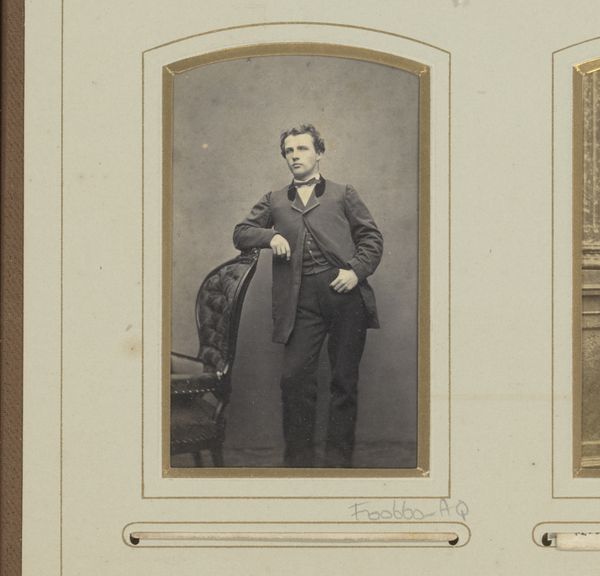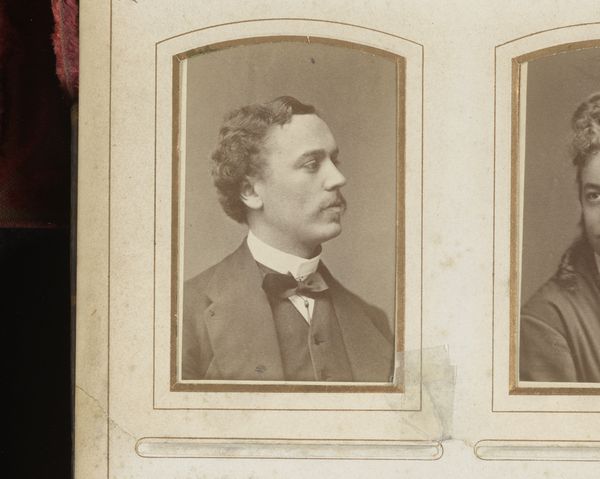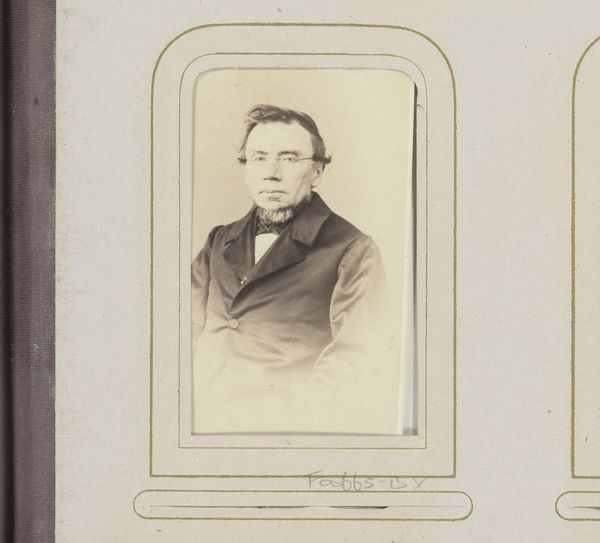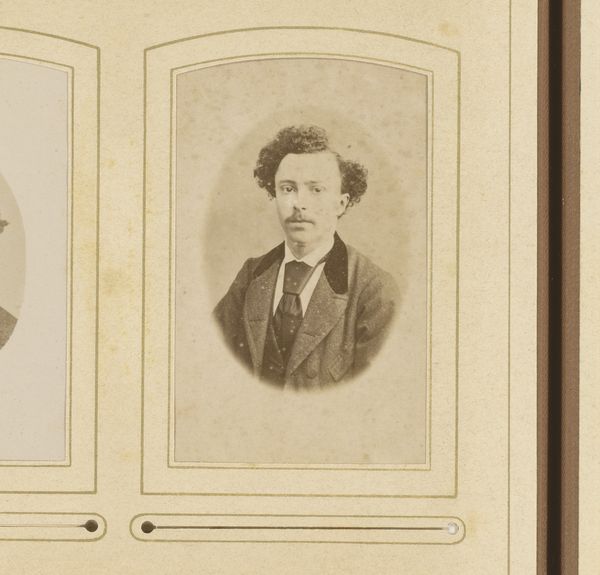
Dimensions: height 83 mm, width 50 mm
Copyright: Rijks Museum: Open Domain
Curator: Here at the Rijksmuseum, we have an interesting albumen print to consider. It’s a portrait of a young man, believed to have been created between 1880 and 1900 by Friedrich Julius von Kolkow. Editor: Immediately, I'm struck by the photograph's somber mood. The desaturated tones and the subject's intense gaze create a really interesting and melancholic atmosphere. It feels like looking at a ghost of the past, particularly given the image is encased within an oval border, a sort of double framing that adds to the distance. Curator: That's an excellent point about the double framing. In this period, photographic portraits were often about constructing and solidifying social identity. An image like this wasn’t merely a representation of an individual, it was a carefully curated presentation for public consumption, an intimate picture designed to fulfill a very public purpose. Editor: Yes, but the tonal range adds complexity here, right? The limited dynamic range, those soft gradations from light to dark—it lends the piece a tangible quality. Curator: The muted colour palette speaks to the broader aesthetic trends of the late 19th century and Romanticism in art. It also highlights photography’s role as a medium for preserving memory during that era, reflecting the changing social values as they transitioned into the modern era. Editor: The textures are something else; notice the texture of the jacket and how it interacts with the smooth, almost porcelain-like skin. The image oscillates between tactile and ethereal sensations. The albumen process really gives depth despite the lack of vivid colour. Curator: Precisely! The portrait serves not just as a glimpse into one life but also into the rapidly shifting socio-political world it inhabited, where technology offered new ways to remember the past and to construct new types of images for broad social consumption. Editor: I see your point! All these layers certainly deepen my reading of its austere character. Curator: Understanding both photography and the socio-historical conditions allow us to more deeply engage with images. Editor: For sure, I didn't think about all these contexts, I just felt the tone of the image... a starting point. Thanks for bringing those details to light!
Comments
No comments
Be the first to comment and join the conversation on the ultimate creative platform.
